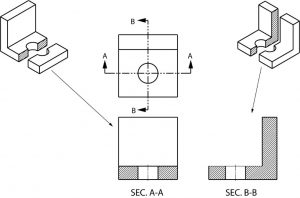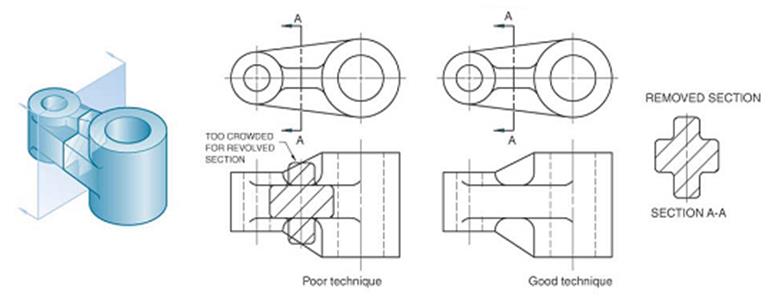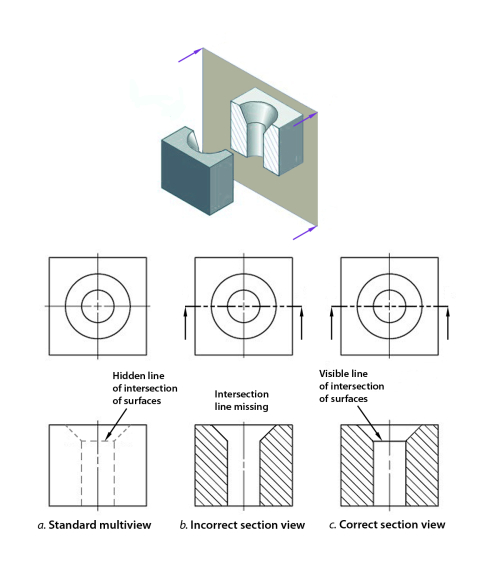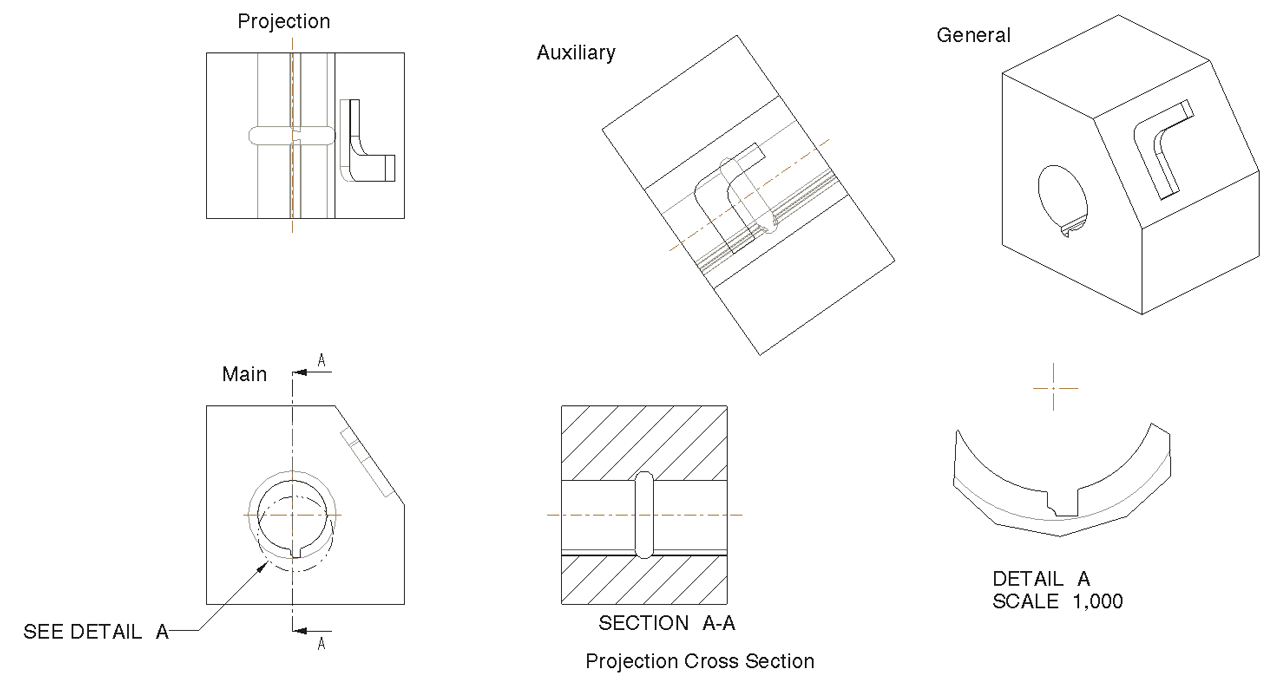What is Full Section. Figure 20 - Front view and half section.
Multiple sections can be done on a single object.

. The lines are thin and are usually drawn. REVOLVED SECTION VIEW Revolved sections show cross-sectional features of a part. Types of Section in Engineering Drawing.
81 and it is required to draw three sectional viewsAssume that you had a bracket and cut it with a hacksaw along the line marked B-B. When specific features of an object that need highlighting are not located. The line that separates the different types interior and exterior may be a.
Phantom line type Section Lines. A few of the more common ones are. Half View Shows only the portion of the model on one side of a datum plane.
The first form is more commonly used. Sectional views in engineering technical drawings Half Sectional views. Types of section views 1.
Partial or Broken Out Section 4. A section is used to show the detail of a component or an assembly on a particular plane which is known as the cutting plane. There are a number of different types of sectional views that can be drawn.
What is Half Section. Full section in a full section the cutting plane line passes fully through the part. They can either be planar cross sections where the cross section cutting line follows a datum plane or planar surface or they can be offset cross sections where you sketch a cutting line through the solid.
A cutting plane line shows where object was cut to obtain the section view. D Z v o Á v P v P v v s Á µ v u v o t l W l ï. Break line is a thin continuous line and is drawn freehand.
An elevation drawing is a view taken from a point outside the object without any slicing. The diagonal lines on the section drawing are used to indicate the area that has been theoretically cut. These lines are called section lining or cross-hatching.
Figure 19 - Full and sectioned isometric views. A short series of lectures on Engineering Drawing as Part of ENGG1960 By Paul Briozzo. Gaskets seals Do not show hidden detail in sectional view.
The cutting-plane line cuts halfway through the part and removes one quarter of the material. There are three major types of sections used in engineering drawing. In both cases the object should be standing on its base when the.
You have learned that when making a multiview sketch hidden edges and surfaces are usually shown with hidden dash lines. Broken View Removes sections from large objects between two points and moves the remaining sections close together. Used to indicate where the cutting plane cuts the material.
Lines used in section views. A simple bracket is shown in Fig. Features that cannot be seen by hidden detail Cutting plane removes part section is what is left Cross hatching ois at 45 equispaced Centrelines often used for cutting planes Very thin sections not hatched eg.
A revolving view is effective for elongated objects or. Here is an object sectioned from two different directions. BROKEN-OUT SECTION VIEW A break line is used to separate the sectioned portion from the unsectioned portion of the view.
Section lines are thin and the symbols type of lines are chosen according to the material of the object. 2D cross-section views You can display these cross sections in 2D views. At each end of the line draw a short line with an arrow to show the direction for looking at the section.
Half Section is used to the exterior and interior of the part in the same view. Normally a view is replaced with the full section view. Partial View Shows only the portion of the view that is contained within a boundary.
The second shows up well on complicated drawings. D Z v o Á v P v P v v s Á µ v u v o t l W l ï. Half sections are commonly used to show both the internal and outside view of symmetrical objects.
Types of Sectional Views Full Section. Used to show where the object is being cut. There is no cutting plane line.
- इजनयरग डरइग म सकशन क परकर 1. Section lines are generally drawn at a 45 angle. Full sections half sections broken sections rotated.
A horizontal section view is one where the cutting plane is on edge in the front view and the top view is sectioned. Full View Shows the entire model. A profile section view is one where the cutting plane is on edge in the front and top views and the profile view is sectioned.
No need for additional orthographic views. A full section is the most widely-used sectional view. Broken crosshatching shows where cutting plane line intersections material each material has its own crosshatching cutting plane line shows where the imaginery knife cuts thru the part line is always parallel to a line of rotation shows which cutting plane line goes to the section.
A section drawing is a view taken after you slice an object then look at the surface created by the slicing. In this view the cutting plane is assumed to bend at a right angle and cuts through only half of the. The Cutting-Plane Line The cutting-plane line represents the edge view of the cutting plane see Figure 8-3.
ASME specifies two forms for cutting-plane lines as shown in Figure 8-4. There are two main types of cross-section views that you can display in drawings. A half-section is a view of an object showing one-half of the view in section as in figure 19 and 20.

Sectional Views In Engineering Technical Drawings

Sectioning Technique Engineering Design Mcgill University



0 comments
Post a Comment